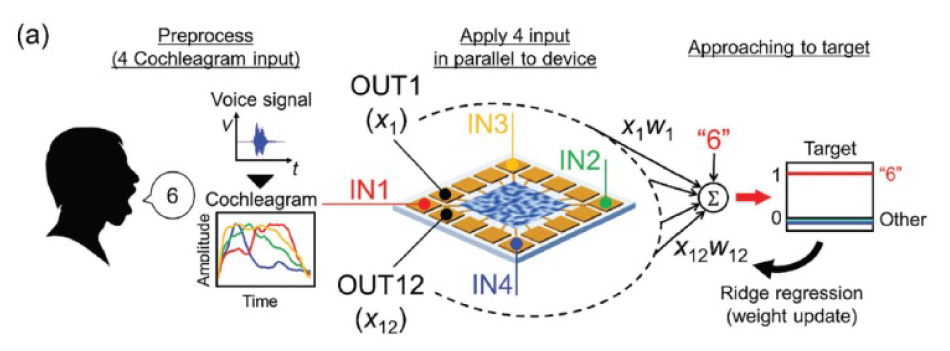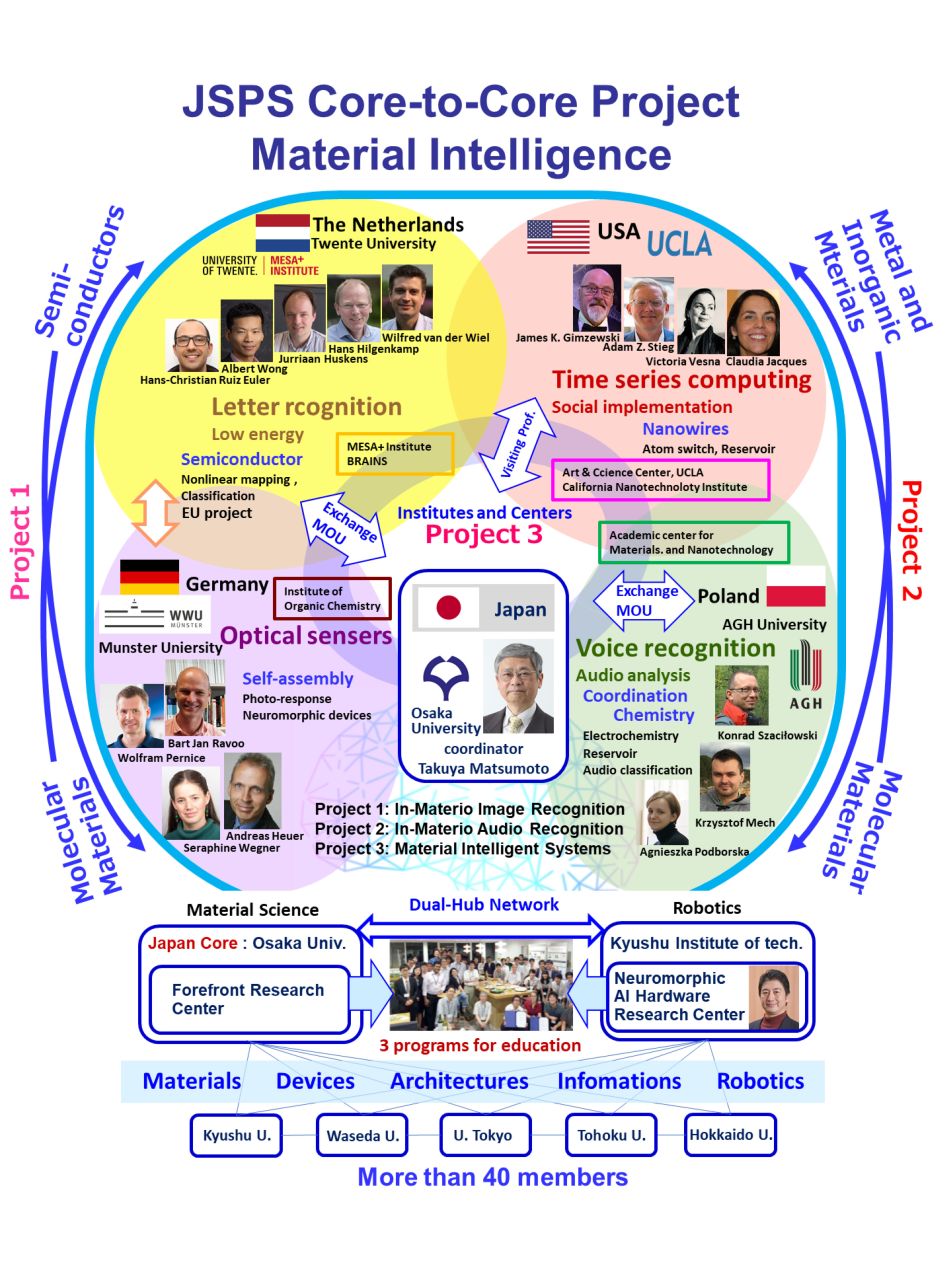
We are using atomic and molecular theory to elucidate the neural arithmetic functions intrinsic to matter and materials in order to both create a new cross-disciplinary academic field called material intelligence and implement such functions for robots and other applications.
Based on precise physical property measurements made by the Graduate School of Science and Institute of Scientific and Industrial Research (SANKEN) at the atomic and molecular level, we are building a nanoscale network that has neural characteristics, including nonlinearity and hysteresis. In cooperation with the Department of Information and Physical Sciences of the Graduate School of Information Science and Technology, we are also mathematically analyzing the behavior of electrons and ions with the aim of collaborating with the Kyushu Institute of Technology to implement robots and other applications as perceptual arithmetic devices that can be useful to society. In addition, in cooperation with Nara Women’s University, we are conducting outreach activities that include high school-university cooperation.
FEATURE
We are creating a new research field that fuses chemistry, physics, and information science to derive the information functions intrinsic to matter and materials.
We are searching for the guiding principles governing systems—such those found in living things—in which rigid, precise functional cores work in harmony with randomness and noise.
We are paving the way to handle the increasing computing-resource and power requirements currently faced by artificial intelligence based on software that uses von Neumann computers.
The Forefront Research Center will be run as the core of the international research base for the Japan Society for the Promotion of Science, which consists of dozens of researchers from the Netherlands, the USA, Germany, Poland, and Japan.
RESULTS
Research progress
Speech recognition using a single drop of a molecule: deriving intelligence from materials

We discovered that—as a result of redox reactions in humid environments—electrochemical reactions with hysteretic electrical characteristics occur when a random network of sulfonated polyaniline (SPAN), a type of conducive polymer, is formed by using the simple method of just dropping the required solution. In addition, by operating material-based reservoir computing—a type of neural network—in the SPAN network, we achieved speech recognition for the words zero to nine. This result is expected to be useful for devices that make up next-generation artificial intelligence systems, including ultra-low-power computing and embedding systems in AI robots. Although we used organic molecular nanomaterials to reproduce neural network computing methods, we also showed that the organic molecular networks themselves could possibly be used to achieve high-density, compact artificial intelligence, and we opened the door to the further development of a new cross-disciplinary academic field encompassing nanomolecular science and information science.
Further development
